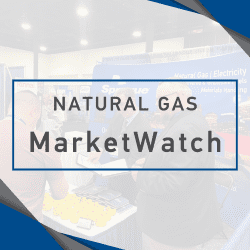Recap: Oil futures traded back in forth in a narrow range on Monday, with a mixed settlement. However, signs of a slight increase in demand contributed to the fourth straight month of gains. A stronger than expected increase in China’s service sector pulled prices off the lows of the day, but the up move lost steam as demand concerns overshadowed the positive report. October WTI gained 36 cents, or 0.8%, to settle at $42.61 a barrel. November Brent fell 53 cents, or 1.2%, to finish the session at $45.28 a barrel. September RBOB settled at $1.2761 a gallon, down 3%, and September heating oil lost nearly 1.7% to $1.1961 a gallon. The September contracts expired at the end of the trading session
Technical Analysis: It appears that buying dips in WTI is still a good idea, given the fact that this market is still trending sideways with a slightly upward tilt. The 50 and 200-day moving averages should continue to provide support, with this market trying to get to the $49 range. Should we get to $50, we could see this market take off to the upside. A break below $50 opens up the possibility for a run at $35.
Fundamental News: The Louisiana Offshore Oil Port resumed operations at the Marine Terminal. It said there were no interruptions in deliveries at the Clovelly hub.
Goldman Sachs expects Brent prices to rally in 2021, supported by a tighter oil market and as an economic recovery from the coronavirus-induced decline gathers pace, helped by a possible vaccine. Goldman forecast Brent prices would increase to $65/barrel by the third quarter of 2021 and average $59.40/barrel for the year. It estimates demand will increase by 3.7 million bpd from January to August next year. It forecast oil supply to be tighter in 2021 as OPEC+ will likely stick to its production quota in the second half of 2020 and a rebound in shale activity stays limited.
The U.S. Energy Information Administration said in a monthly report that U.S. oil production increased by 420,000 bpd in June to 10.436 million bpd. Production in June increased in Texas by 227,000 bpd and also increased in North Dakota, while dropping 49,000 bpd in the offshore Gulf of Mexico.
The U.S. Department of Interior reported that U.S. Gulf of Mexico offshore oil output fell by 989,000 barrels, or 53% of the region's daily production, as energy companies restarted more wells in the aftermath of Hurricane Laura.
Murphy Oil said operations at its U.S. Gulf of Mexico offshore oil and natural gas production facilities have resumed and employees and contractors are back on platforms. The company had shut and evacuated certain offshore oil and natural gas platforms and facilities, in the previous week, ahead of Tropical Storm Laura.
Abu Dhabi National Oil Company announced a 30% cut in term crude supplies in October, in order to comply with the United Arab Emirate's commitment to an OPEC+ pact.
IIR Energy said U.S. oil refiners are expected to shut in 4.6 million bpd of capacity offline in the week ending September 4th, increasing available refining capacity by 311,000 bpd from the previous week. Offline capacity is expected to fall to 3.7 million bpd in the week to September 11th.
Early Market Call – as of 8:30 AM EDT
WTI – Oct $43.02, up 41 cents
RBOB – Oct $1.2294, up 1.57 cents
HO – Oct $1.2305, up 1.32 cents
View the Sprague Refined Products Market Watch Report in a downloadable pdf format by clicking below.
Click to view more online:
Heating Oil Supplier
Diesel Supplier
View market updates
View our refined products glossary
Go to SpraguePORT online










